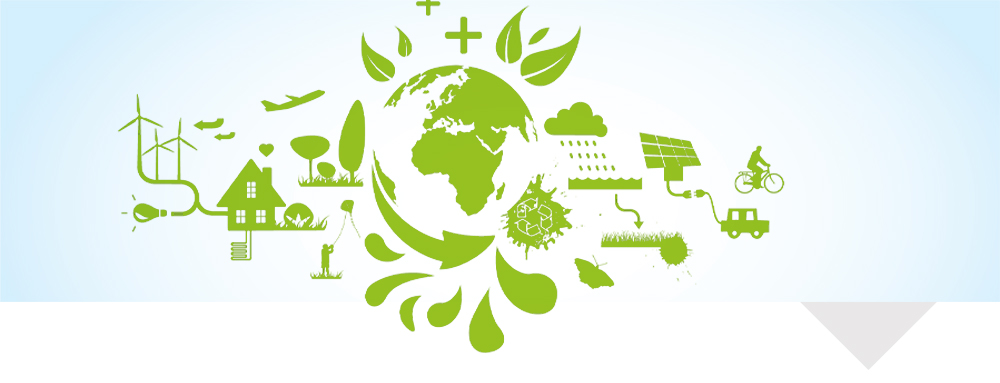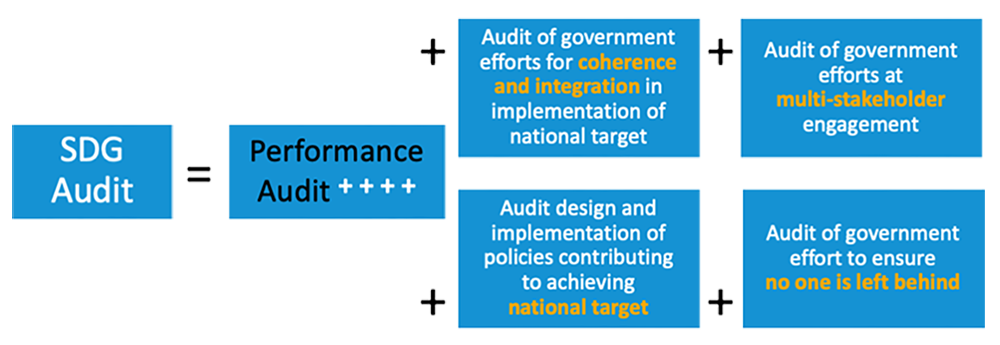August 24, 2023

|
The global audit community has embraced their role in contributing to the 2030 Agenda under the INTOSAI Strategic Plan, which includes contributing to the achievement of the Agenda as an organizational priority. The INTOSAI Development Initiative has developed methodology to audit the implementation of the SDGs, called IDI’s SDGs Audit Model (ISAM). While commitments to the SDGs are made at the national level, they cannot be achieved unless all levels of government are involved. Accordingly, SDGs should be considered by auditors at the provincial and municipal levels as well as by departmental internal audit functions. |
Auditing the Sustainable Development Goals (SDGs) can play a crucial role in ensuring accountability, transparency, and progress towards sustainable development.
While legislative audit offices must consider a wide and complex array of issues when deciding on audit topic coverage, we believe that an SDG lens can be incorporated into most audits. This can be done efficiently if SDG considerations are fitted into existing methodologies and work practices.
Further, we believe that an SDG audit isn’t all that different from a performance audit. Simply put, a comprehensive SDG audit under the IDI SDG audit methodology is just a “performance audit ++++” as depicted below:

With this in mind, here are 10 tips on how to start auditing SDGs:
Consider the level at which you are able to integrate SDGs into your auditAuditors can take different approaches to integrating the SDGs into an audit, which can be thought of as three levels of integration:
|
|
Don’t wait for government to be ready before auditingThe UN has been warning since 2019 that the world is not on track to achieve the SDGs. An audit that identifies gaps in preparedness and frameworks can help expedite government action. While performance auditors often hesitate to audit ‘what’s not there’, SDGs are one of the exceptions to this rule |
|
Use existing structures and systemsRather than separate and stand-alone consideration of SDGs, build this into existing processes, methodology and templates. |
|
Add an SDG lens to audit topic selection and multiyear planning processAudit offices consider multiple factors when setting annual or multiyear audit plans. These include auditability (availability of resources, skills and data), potential value-add from the audit, a risk assessment, financial materiality, public interest and importance to parliamentarians. An SDG lens can be applied across these areas. Under risk assessment, consider the progress against linked national targets or incorporation of the concept of “leave no one behind” in the program design. Under auditability, consider the availability of relevant national statistics. Under value addition, ensure that environmental, social, and economic areas are covered when selecting topics. |
|
Keep scope manageableAuditors sometimes scope SDG audits too broadly. Try limiting the scope to a single SDG target or to fewer higher risk auditees based on stakeholder analysis. |
|
“Leave No One Behind” may already be part of audit scope considerationsThe 2030 Agenda includes a pledge to ensure that “no one will be left behind” and to “endeavour to reach the furthest behind first”. Many audit offices have already incorporated an equity, diversity and inclusion lens into their audit scoping considerations and ask whether programs are designed with the needs of the most vulnerable in mind. This is already one of the four “+’s” of an SDG audit, so you are already 25% of the way there! |
|
Refer to other SDG auditsA review of SDG audits will show you that similar issues crop up. These include issues of policy coherence, lack of structures and poor data frameworks. Focusing on these can save time. |
|
Remember that national targets can be customizedWhen auditors start to consider SDGs, a common misconception is that countries need to adopt the global goals word-for-word. This is not the case. Ideally, national targets should be customized to make them relevant to the local context. |
|
Data will lead the wayUnless disaggregated data is collected, measured and monitored, achieving these goals is like running in the dark and hoping for the best. Pay attention to the role played by the national and/or subnational statistics bureaus and analyze how they are involved in conversations around gathering, maintaining, measuring and reporting data to support achievement of targets and indicators. |
|
Talk to financial auditorsThe issuance of the new sustainability standards means that, once these are adopted, sustainability and climate related disclosures will form part of financial statement disclosures. While the private sector will lead this, the public sector will also follow suit. SDG targets and indicators are an existing way to provide results-focused performance indicators. The UN Secretary General, António Guterres, suggested at the 2020 UN Global Compact Leaders Summit that the SDGs could be a ready-made tool to take ESG (environmental, social, and governance) reporting to the next level.1 |
An SDG audit does not have to be daunting. To make an impact, it could be as simple as a regular performance audit with one or more additional lines of enquiry that address one of the four ++++ of an SDG audit. By following these tips, you can begin considering the SDGs in audits and contributing to the achievement of these goals.
These 10 tips are based on an article written by Sherazade Shafiq, Director, International Programs, CAAF, and Kimberley Leach, Principal, Office of the Auditor General of Canada, for the International Journal of Government Auditing.
Liked it?
Explore the topic of auditing the SDGs in depth in our course on Auditing the Implementation of the Sustainable Development Goals.
To learn more about auditing a central aspect of the SDGs, read our Practice Guide to Auditing the United Nations Sustainable Development Goals: Gender Equality.
Also consult our Oversight Tips on Questions PACs Should Ask Their Legislative Auditor About the UN Sustainable Development Goals, and our webinars on Auditing Progress Toward the United Nations’ Sustainable Development Goals and Vaccine and SDG Audits.
References
INTOSAI Development Initiative, Auditing the SDGs: https://www.idi.no/work-streams/relevant-sais/auditing-sdgs
INTOSAI Working Group on Environmental Auditing, Auditing and implementing the United Nations Sustainable Development Goals focusing on environmental auditing: https://www.environmental-auditing.org/media/112856/21h-guidance-on-auditing-the-2030-agenda-focusing-on-environmental-auditing-31-jan-2019-clean-ok.pdf
1 https://www.un.org/sg/en/content/sg/statement/2020-06-15/secretary-generals-video-remarks-the-un-global-compact-leaders-summit
See more Audit Tips


 The
The 